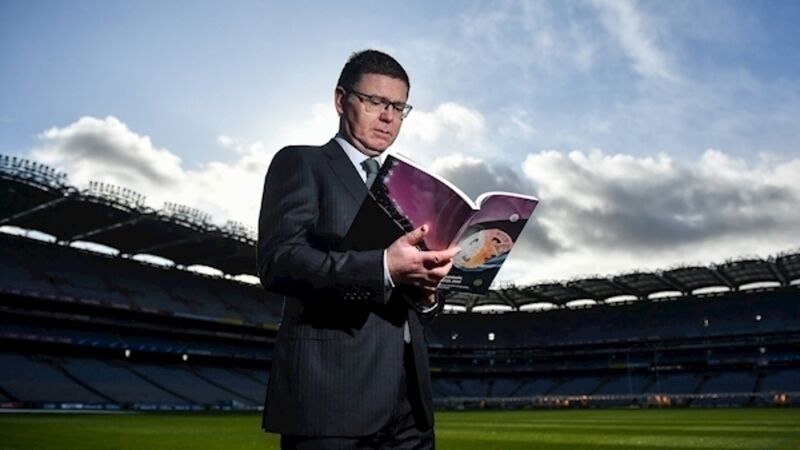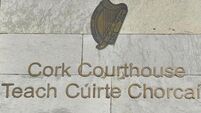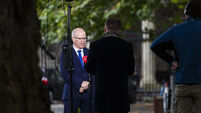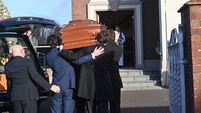Paul Rouse: Revised calendar crucial if Tom Ryan’s plans are to come to fruition

It is not often that the most powerful administrator in any sport acknowledges that the supposedly central premise on which his organisation rests is not what it seems to be.
But Tom Ryan, the director-general of the GAA, has done so when he used the GAA’s annual report to consider that great prayer: “The club is at the centre of the GAA.”
This prayer has been recited by people even as they have introduced measures or policies or agreements that have rendered its meaning a complete nonsense.
Ryan acknowledges that claiming that the club is at the centre of the GAA is something that “we often instinctively attest”.
He then goes on to say: “That is still a powerful statement, although to my mind it is sometimes more of an aspiration or statement of intent than an inalienable fact.”
It is a brave thing to do to hold up to the light such a sacred truth. But anybody who has been involved with club teams which are filled with either teenagers or adults will understand exactly what he means.
Ryan is absolutely right to point out the quality of the facilities, and the financial and administrative support given from the central GAA to its clubs. He is also right to note the disparate challenges that facing rural as against urban clubs, and the great burden carried by volunteers to sustain the Association.
But the very positing of the idea that the GAA has failed to put clubs at the centre of its existence is a vital acknowledgement of the central challenges facing the Association.
What makes the annual report such fascinating reading is that rather than just leave such sentences hanging in the air, Ryan also outlines what the future might look like.
More precisely, he uses the report to set out in clear English a series of actions that would transform the operation and experience of GAA members across the country.
The list is printed in bold in the report and it reads:
- 1. The year is demarcated more clearly, with defined rest periods.
- 2. The burden on county players’ time is lessened, with a lower proportion of training to games. Thus the county players’ lot is more balanced.
- 3. County players field regularly for their clubs. Clubs retain a higher proportion of juveniles making it through to adult grades.
- 4. Clubs are self-sustaining in terms of coaches and team managers, with outside managers the exception.
- 5. All of these mean the financial cycle changes, lessening the financial pressure on counties — and clubs — and lessening the stress on officers.
- 6. Similarly the pressure centrally to fund the game is lessened as well, relaxing our commercial focus and allowing us to provide more for the future.
- 7. We have revamped organisational structures that better reflect the needs of the modern organisation and that better equip counties to manage the scale and complexity of issues they face.
- 8. A less onerous burden for volunteers means more enjoyment, more ambition; and more (and new) people attracted to offer up their time.
There is an amusing line sitting in the report straight after the list. In this line Ryan writes:
To me that’s not revolutionary.
Of course, the fact he writes that at all means he understands just how revolutionary it is in the context of the direction the GAA has travelled in the new millennium.
Nonetheless, what is most powerful about the list is not just that it would mark a radical change of direction. Instead, it is the fact that this is a vision that is clear, sensible and achievable.
Of course, it will all hang on the detail of what is undertaken.
For example, a properly demarcated year means a radically redrawn calendar of play.
This calendar must allow for rest periods and must allow for county players to play for their clubs, while also giving those club players meaningful matches in an organized manner across the best months of the year.
The thing is that this is the foundation stone on which will rest the whole gamut of proposed financial, commercial and organisational retrenchment. Without a fundamentally revised calendar, the rest of Ryan’s ambitions will fall.
What the GAA’s annual report makes clear is the imperative of action. Nowhere is this more clear than in the section on financial management.
In this section, there is an acknowledgement of the increased revenue growth during 2019 — this increase was in the order of 16%.
Driving this growth are gate receipts. The fact that the All-Ireland senior football final went to a replay was a help in this regard — as was the increase in ticket prices. (In a misstep, Ryan refers to these increased as “well-received”!).
In setting out the 11.6% increase in preparing senior inter-county teams, Ryan is clear that what is happening in this area is not sustainable.
He argues that proper financial controls and procedures are essential, and that independent review (at least to some degree) would be beneficial.
Clearly mindful of the failings in the FAI — but also of the financial problems that have manifest in various GAA clubs and county boards — he writes: “There is no need to dwell here on the travails of other organisations other than to remark that there is no room at all for complacency in the GAA. There are many respects in which I know we can do better.”
He also points out the bald truth which sits at the heart of this issue: “Quite apart from being sustainable, it is not desirable. Yes, counties will invariably secure the funds they need, but at the cost of immense pressure on the officers. This outlay represents a huge proportion of our collective resources. So, the other unseen cost is all of the other GAA plans in a county that are foregone or neglected — coaching, club support, facilities and so on.”
Ultimately, the message is a simple one: “Costs of preparing teams simply must be curtailed.”
It will be fascinating to watch and examine the progress that is made towards delivering the eight-point plan that Tom Ryan has set out. It is something that will require skill and courage and support from across the GAA.
It remains to be seen whether this report can move beyond an acknowledge that something needs to be done to actually doing something tangible.
That is not to create an expectation that change will be immediate. Instead, that the direction of that change will immediately be made clear and that progress is incremental, but undeniable.
And a first step: every delegate who is attending Annual Congress must read the report.
Ideally, in the week before Congress, the issues raised would be considered by every county board.
And, certainly, anybody who wished to serve as the Association’s president, must set out whether they subscribe to the principles outlined and set out their commitment to deliver.
- Paul Rouse is professor of history at University College Dublin.
















